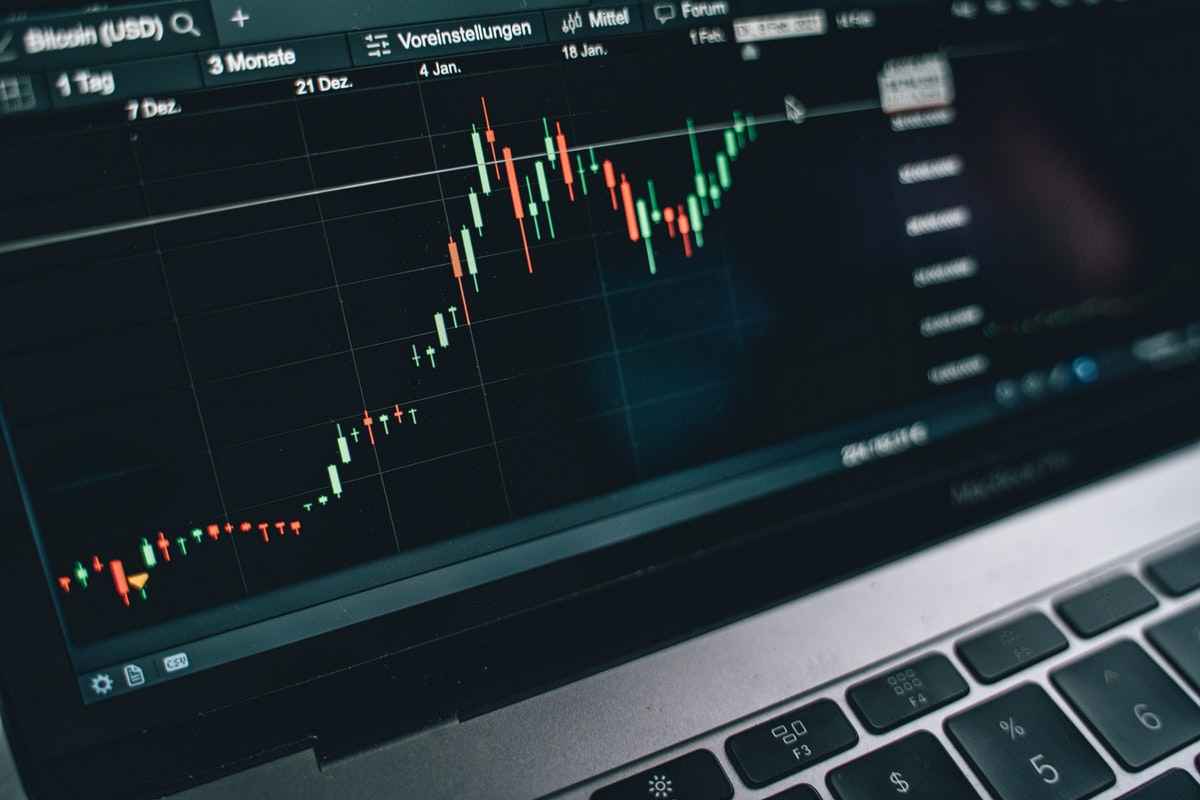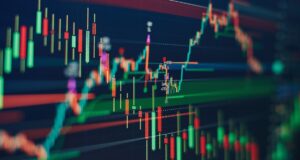Dealing with forex market volatility, in this article we are going to discuss market volatility and what is all about, how to trade on a volatile market and how to also chose or identify volatile currency pair.
Forex market volatility
If you want to generate significant gains from Forex, you need to grasp the notion of volatility, and we’ll show you how to do just that.
To comprehend volatility, you must first grasp the concept of standard deviation of price, which may seem perplexing at first but is completely rational and, if grasped, can significantly increase your Forex trading profit potential.
What exactly is liquidity?
When a trader first begins his trading career, one of the features that appeals to him the most is the quantity of liquidity provided by the forex market.
According to the most recent data, the daily trading volume of forex is close to $5.1 trillion.
The capacity to trade a currency pair on demand is known as liquidity. It is a measure of how quickly a currency may be traded in basic terms.
When trading big currency pairings, you have access to a tremendous level of liquidity.
Financial institutions, large corporations, and retail traders all contribute to this liquidity.
However, not all currency pairings are liquid; liquidity varies according on whether the pair is major, minor, or exotic.
When compared to other currency pairings, major pairs usually have a lot of liquidity. We’ll look at some of the money management rules in trading with regard to liquidity in the following part.
Read more article: Free Software for Forex Trading

Is volatility good for forex?
Currency swings in the worldwide foreign exchange market are referred to as forex volatility. Volatility may range from hour to hour, second to second, based on a variety of variables, but is it good or bad for traders? Let’s look at it more closely.
In the short term, there is a lot of volatility.
Price changes are necessary for earning money in the financial markets, with FX volatility being particularly important for short-term investors.
Day traders, for example, rely on hourly price swings, and without them, there would be no profit potential. Swing traders who operate on a somewhat longer time period want volatility as well (usually days or weeks).
Swing traders often use technical indicators to assess market volatility and determine when it is appropriate to leave and initiate a trade. Bullish and bearish trends may be predicted using these indicators.
In the Longer Term, Volatility
Long-term traders that are conservative tend to use the ‘buy-and-hold’ approach, which means they retain currencies for longer periods of time than short-term traders.
When it comes to generating money from the markets, forex volatility is just as important as short-term trading tactics.
Lengthy-term trading is based on the assumption that price variations will result in a profit over a long period of time. This method requires patience as well as a thorough understanding of trading.
When is Volatility a Negative Factor for Traders?
Many traders prefer the adrenaline rush that comes with following price changes and patterns, therefore they live on the volatility of FX markets.
Volatile markets, on the other hand, come with a lot of danger, so it’s critical to manage your trading choices carefully and conduct a lot of research before making a deal.
Many traders’ downfalls are due to poor risk management. FX traders utilize a variety of vital indicators to help their methods, including as Bollinger Bands, RSI, volume, and established support and resistance levels, since failing to join or leave a transaction at the correct moment may be expensive.
Investors seeking low-risk returns frequently choose for portfolios with reduced volatility rather than portfolios with the potential for large gains or losses.
To summarize, various traders interpret volatility differently, and this has a lot to do with an investor’s risk tolerance.
Because market volatility may either increase profit potential or generate excessive losses, it’s critical to monitor and analyze market developments on a regular basis.
This is especially important during periods of political and economic unrest, since both may have a significant influence on the FX markets.
Read more article: Get Funding for Forex Trading
Create an EA Without Coding For Free Click Here

Risk and Liquidity
Because there are no buyers or sellers at any particular moment, a market with limited liquidity displays chaotic movements and gaps.
When news releases are made over the weekend or if an event occurs at the same time, these gaps develop. A gap like this following a news announcement is seen in the graph below.
When you know there will be a shift in liquidity levels between Friday and Monday, it is not a good idea to hold large positions on Friday, according to money management rules.
If the price opens over your stop loss on Monday, the order will become a market order, and the loss will be considerably more than the predetermined loss (determined using stop-loss).
During periods of news releases, a cautious trader should avoid taking any positions.
Retail forex traders should reduce their leverage and use stop losses based on longer time periods to limit liquidity risk.
You’ll be protected from any gaps that occur at the start of the week if you do it this way.
Read more article: Basics of Forex Trading for Beginners
Read more articles
Volatility
Currency movements in the worldwide exchange market are referred to as volatility. Many variables influence price changes from hour to hour, minute to minute, and second to second.
Volatility is appealing to many forex traders, but it is not without danger. As a result, managing volatility and doing extensive research before to entering a trade is critical.
Taking the risk of volatility out of the equation
Follow the tactics listed below to get the most out of volatility:
Strategies for dealing with volatility
In terms of volatility, money management simply proposes that traders invest in techniques that can perform well in a variety of market scenarios.
Widening your goals, establishing tight stop-losses, and evaluating higher timeframes are some of the methods that may be utilized to shift volatility in your advantage.
Diversify your portfolio
Don’t put too much faith on any one asset class or currency pair. If one investment underperforms, other investments may outperform over the same time period, lowering your total losses.
This occurs as a result of the disparity in volatility across asset types. A well-balanced portfolio protects against losses while still providing a high rate of return.
Every trader’s first focus should always be money management, since these rules guide us while making trading judgments.
In the next sections, we’ll go over a lot more money management topics.
Read more article: How to Make Profit on Forex Trading

Dealing with Forex Volatility
In many respects, the previous several years have been extremely unpleasant for Corporate India. Forex Risk Management was one of the methods in which hundreds of crores of rupees were lost.
In one well-known example, a corporation lost about Rs 1500 crores after going from a profit in 2007-08 to a loss in 2008-09.
An Accounting Standard was also revised to enable corporations to capitalize currency losses on international loans, which is a well-known example.
What went wrong, exactly? The most evident change was a significant increase in Dollar-Rupee volatility.
Rupee gained 11 percent in 2007 and plunged 33% in 2008-09, compared to an annual range of 10% (between 43 and 47) from 2003 to 2007.
The less visible, but much more essential, item that went wrong was that Corporates’ FX risk management strategies failed miserably.
Two points are made in this article. To begin with, FX volatility is here to stay, and the sooner India learns to cope with it, the better.
Second, due to certain basic weaknesses, current corporate India FX risk management strategies are ill-equipped to cope with volatility (as has been extensively proved).
However, the piece does not finish on a bad note. If organizations wish to cope with the new reality of FX volatility, it suggests a series of questions that senior management, including the Board of Directors, should consider and answer.
Read more article: Tips on Forex Trading for Beginners

Volatility is expected to stay high
Dollar-Rupee volatility has risen steadily throughout the years, as measured by the percentage change in a month.
Previously, the Rupee fluctuated by an average of 1% (or 45 paise) every month, but currently it fluctuates by an average of 5% per month (about 225-250 paise). Furthermore, volatility is expected to stay above 3% (135-150 paise) in the future.
The rise of India’s Current Account, which includes both goods and services exports and imports, as well as India’s Capital Account, is the primary cause of the structural increase in volatility.
Portfolio investment flows are characterized by a high degree of volatility. The daily turnover in the Dollar-Rupee market has risen dramatically as a result of this.
To the point that the RBI is finding it more difficult to keep daily volatility under control.
Forex volatility is unlikely to reduce as the economy continues to develop and open up.
As a result, the sooner Corporate India accepts currency volatility as a reality and learns to manage it, the better.
Unfortunately, Corporate India’s current approach to managing FX risk is grossly insufficient for dealing with currency fluctuation. The fact that firms’ financial accounts are bleeding is proof of this.
Flaws in the foundation
Corporate India’s FX risk management strategies have certain basic problems. The following are three of these flaws:
There are no benchmarks
In a vast number of firms, the unspoken but implied goal of FX risk management is to strive to beat the market.
The currency desks in organizations are under a lot of pressure to earn money. Don’t believe everything a company says in its annual report.
Verify this assertion with the dealers and risk managers in the treasury departments of corporations.
This occurs because most businesses do not establish a benchmark by which to guide their FX risk management.
As a consequence, the stock market has become the default benchmark, and everyone is attempting to outperform it. The success of a hedge is determined by whether it outperforms the market.
Read more article: How to use VPS for Forex Trading
Create an EA Without Coding For Free Click Here
Read more articles

If at all possible, use a fixed benchmark
Benchmarks are used by a small number of firms, and they usually have a fixed benchmark for the whole year.
During the yearly budgeting procedure in February-March, a certain USD-INR rate is chosen, and hedges are implemented appropriately.
This is done because (a) a set benchmark is easier to budget with, (b) a company’s marketing and production divisions do not want to deal with a “non-domain” variable, and (c) most individuals still have an intrinsic “desire” for exchange rates to stay stable.
This approach, however, is distant from reality. The currency market, like most other markets, is prone to extreme swings and volatility.
The criteria that go into determining the yearly currency projection (and benchmark) are likely to alter. As a result, the Benchmark needs to be updated.
Regrettably, the method is rigid and does not allow for changes in benchmarks or course correction.
Hedging isn’t in the budget
In 2007 and 2008, it would be a very uncommon corporation that has set aside a budget for hedging.
Forex Hedging is intended to be, or so it seems, costless, despite the fact that every company activity has a budget given to it, be it as boring as the daily care of toilets.
That is why hedging budgets for FX are unheard of. That is why, in 2006 and 2008, hordes of corporations took on 1×2 Put Risk Reversals to hedge their exports.
Purchasing a basic, vanilla Put costs money, and no corporation had anticipated this.
As a result, everyone attempted “zero cost options” and ended up with losses many times more than the option premium they might have paid earlier on simple vanilla puts.
Read more article: Learn Forex Trading Step by Step

Nine Crucial Issues
Of course, pointing out the flaws is simple. Proposing a solution is more challenging. If companies want to get out of the present quagmire that is FX risk management, they must do some serious soul-searching.
Below is a list of nine critical questions that businesses should ask themselves. The answers to these questions may pave the path for future improvements in currency risk management.
1. What is our Foreign Exchange Risk Management Strategy?
Anything might be on the agenda, from “We want to prevent losses” to “We want to create profits,” “We want to train our personnel,” “We want to modernize our treasury software,” and so on.
Let it be stated simply that there is nothing wrong with the FX risk management objective being “We want to earn money.” The most crucial thing is that the goal be tackled properly.
2. Have we measured our year-end FX risk management goals?
Whatever goals have been included in the Agenda in (1) above must be quantified.
For example, if the goal is to “prevent losses,” the amount of losses that must be avoided must be specified, since losses cannot be completely eliminated without reducing profitability.
This also implies that effort has been done to determine the magnitude of potential losses and their effect on the company’s financials.
Similarly, if the goal is to produce money, the firm must analyze its profit potential and establish profit goals that must be met. In order to maximize earnings, it must also measure the risk involved.
The goals will remain homilies if they are not given a numerical value.
3. The funds for production and marketing have been set. Have we created a budget for hedging costs?
Every action requires some investment. Why not try Hedging? Stop Losses on erroneous Forward Contracts and Option Premium on plain vanilla puts and calls would be covered by the Hedging Cost Budget.
It would make the FX risk manager’s life lot simpler, and it would really allow and empower him to reach the established goals.
4. How can we assess the effectiveness of FX Risk Management?
Are we attempting to outperform the market or, more accurately, a Benchmark?
It is impossible to evaluate the success of the FX Risk Management function without quantification of goals.
By default, and as a result of accounting requirements, the corporation tries to outperform the market.
This occurs despite the fact that beating the market on a consistent basis is impossible (and even unwise).
Read more article: Things to know about Forex market
Read more articles
5. Do we use a past, present, or future benchmark?
When a corporation (for example, an exporter) establishes a Benchmark, it usually uses the rate on the date of the bill of lading as the benchmark.
Alternatively, the Benchmark might be the average exchange rate during the previous 3 to 6 months.
Another typical technique is to use the Forward Rate as the Benchmark on a certain date.
Is it possible that these behaviors are both successful and correct? Is there a better method if not?
6. Is there a risk in the past, present, or future?
This is a question that is meant to be rhetorical. A little reflection will reveal that danger exists not in the past nor in the present, but in the future.
We also know that the future will almost certainly vary from the past and present. As a result, the FX Risk Management team should be worried about the future.
7. The market is always shifting. Is our benchmark set in stone? Or is it more dynamic?
Companies often produce a “single number” projection for the whole year ahead and use it as the baseline for forecasting the future.
The reasons behind this have already been discussed in the article. However, this is seldom accurate, since the circumstances under which the prognosis was made are quite likely to alter in the future.
As a result, the prognosis will need to be revised in light of the current, altered circumstances. How many businesses allow for such variance in forecasting and benchmarking?
8. Do we care more about the performance of our Hedges than we do about the performance of our Exposures? Why?
When a Hedge (Forward Contract or Option) runs out of money, most businesses get highly anxious.
In the event that the Exposure (the Export or Import) is not completely hedged (an optimal hedge ratio would be about 54 percent).
There should be delight if a Hedge runs out of money since the Exposure makes money when the Hedge runs out of money.
The issue arises because profit or loss on Hedges is considered “Treasury profit/ loss” inside firms, whilst gains/ losses on the Export/ Import itself are considered non-treasury, commercial gains/ losses.
The majority of FX Desk managers in most firms regret this reality. When a hedge goes out of money, there is a lot to be thankful for.
But when an exposure that was purposefully left unhedged gets into the money, there isn’t much to be thankful for.
Clearly, there is a need for in-depth contemplation on this topic among businesses.
The FX Risk Manager seems to be the most irritated employee in the organization, always on the verge of being crucified. Why?
Create an EA Without Coding For Free Click Here
9. Are we ready to pay for advice up front? Should the commission/brokerage on hedging trades be paid separately from the advice?
Finally, few businesses understand the advantages of separating advice from transactions.
Banks have a history of providing free advice in order to get businesses to hedge via them. Companies, for their part, have been grateful for the free advice provided by banks.
They are often averse to paying for counsel overtly, despite the fact that this is, in reality, the preferable alternative for them. Free counsel has often used a corporation’s fear or greed to persuade it to hedge.
The peculiar phenomena of Corporate India as a whole selling Dollars at 40-41 in 2008, based on the advice that it would fall to 35, demonstrates the reality of this.
Companies may have been able to acquire a different view if they had sought independent guidance. Experience is a great teacher.
Instead of depending entirely on free advice from banks, several corporations have begun to seek advice from independent, professional risk managers. This is a positive move, but there is still more work to be done.
Read more article: Foreign Exchange Market Definition

Volatility is a problem that can be solved
Companies, particularly those in the manufacturing industry, deal with price volatility in their raw materials and end products on a regular basis.
And they’re usually successful at it, generating a tidy profit year after year. Why can’t they cope with currency fluctuations?
Which is, in reality, a lot less than the volatility of commodities? What’s required is a tried-and-true approach for dealing with currency volatility.
There is such a way, which may be discovered by reflecting on and answering the nine key questions listed above.
Read more article: Foreign Exchange Market Today
Conclusion
Finally, there is no easy way of protecting your account for volatility in forex market. The good news about this is that forex trading is much profitable when the volatility is high.
For example, a pair such as EUR/USD will produce better results in strong volatility and also higher risk. Forex traders always prefer high risk as complications will warranty a better return of investment.
So that’s why forex market trader consider volatility with natural things, they are even preparing to deal with more frequent changes in the market volatility.
The Forex market is ?in itself unstable, and it can be a very risky place if we are not prepared. Although you might think that you are prepared, there are chances that you might not be fully aware of the risks involved.
As a trader, one of the most important things to keep in mind is to have the money set aside to deal with the potential volatility, so that even if your entry point and stop loss fails, you will be able to cope up with that failure by having a buffer for your losses.
Forex market volatility could be a good thing, even though it might seem like an obstacle at first glance. In order to really become a profitable forex trader.
One must learn how to deal with this market’s natural flow and work around it when needed. Understanding Forex market volatility is the first step to success in this field.
Download Smoothed RSI Inverse Indicator











Leave a Reply